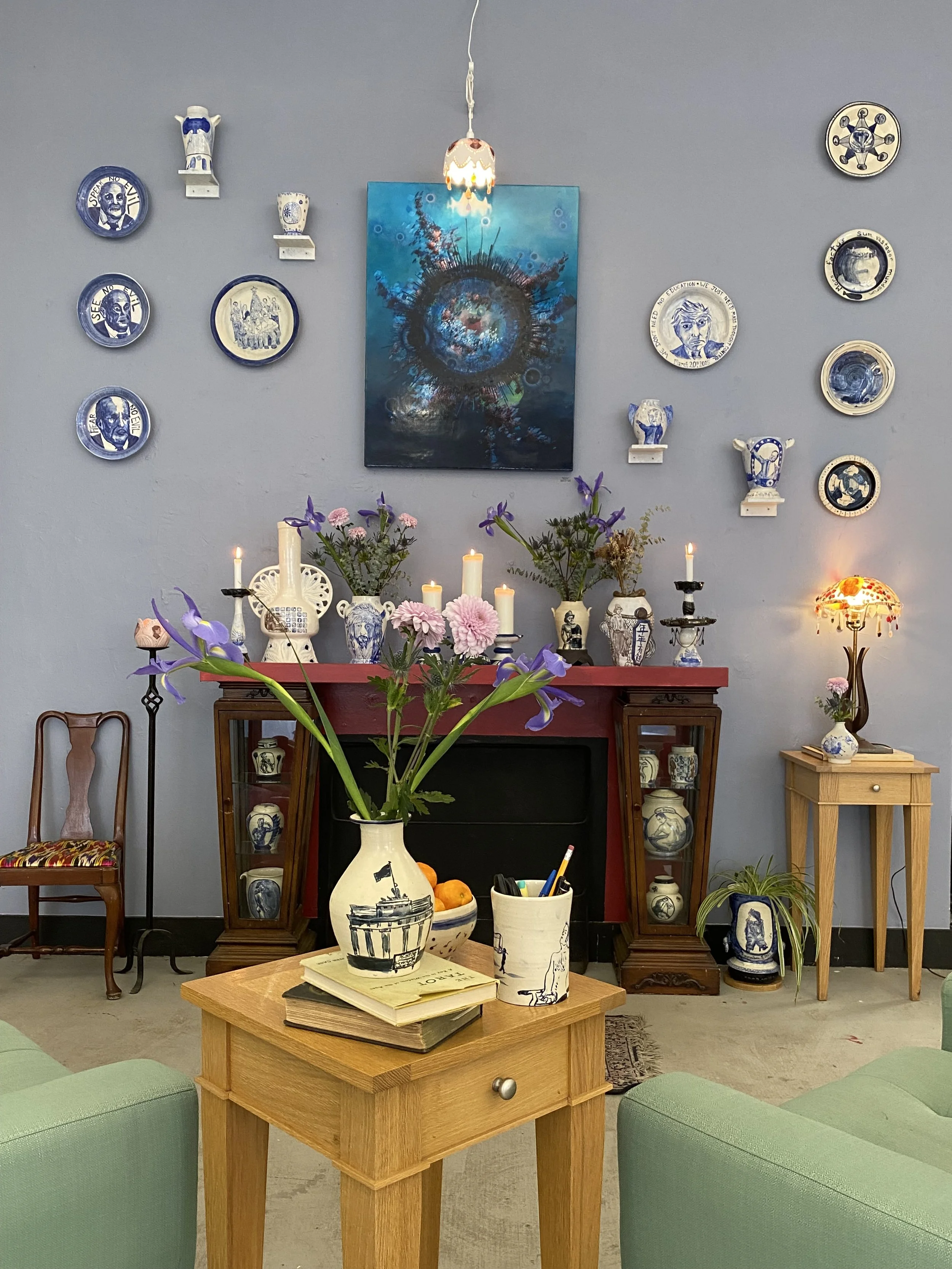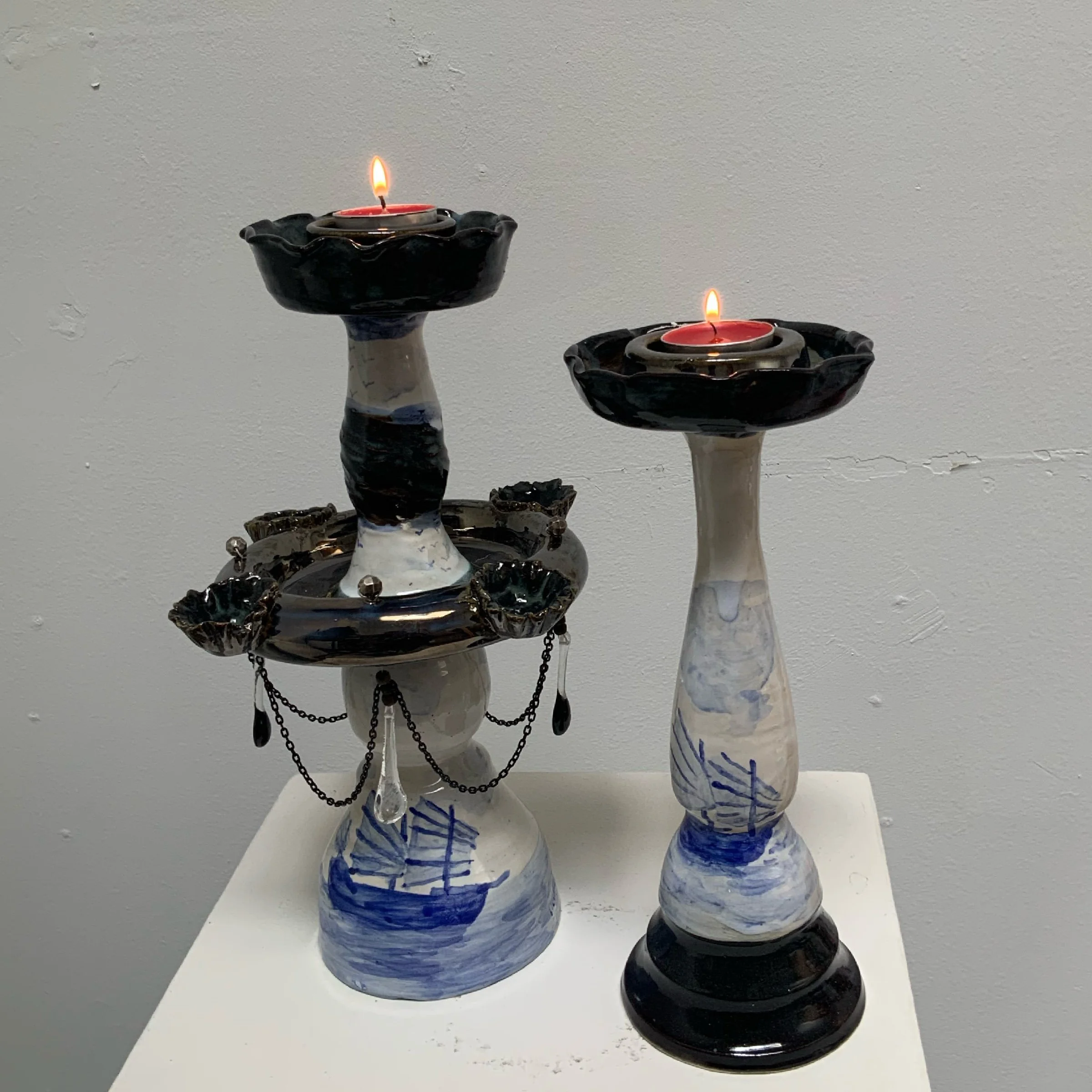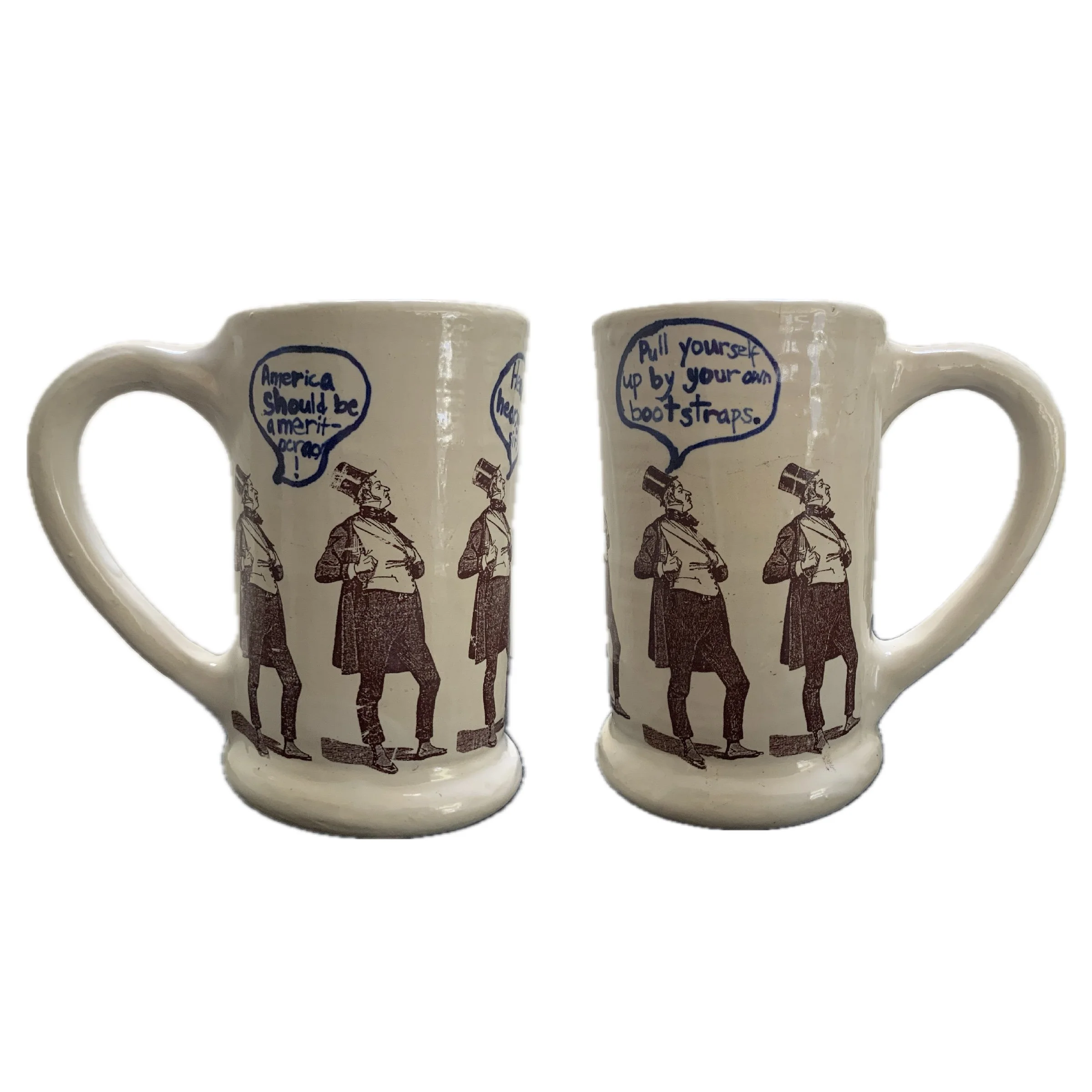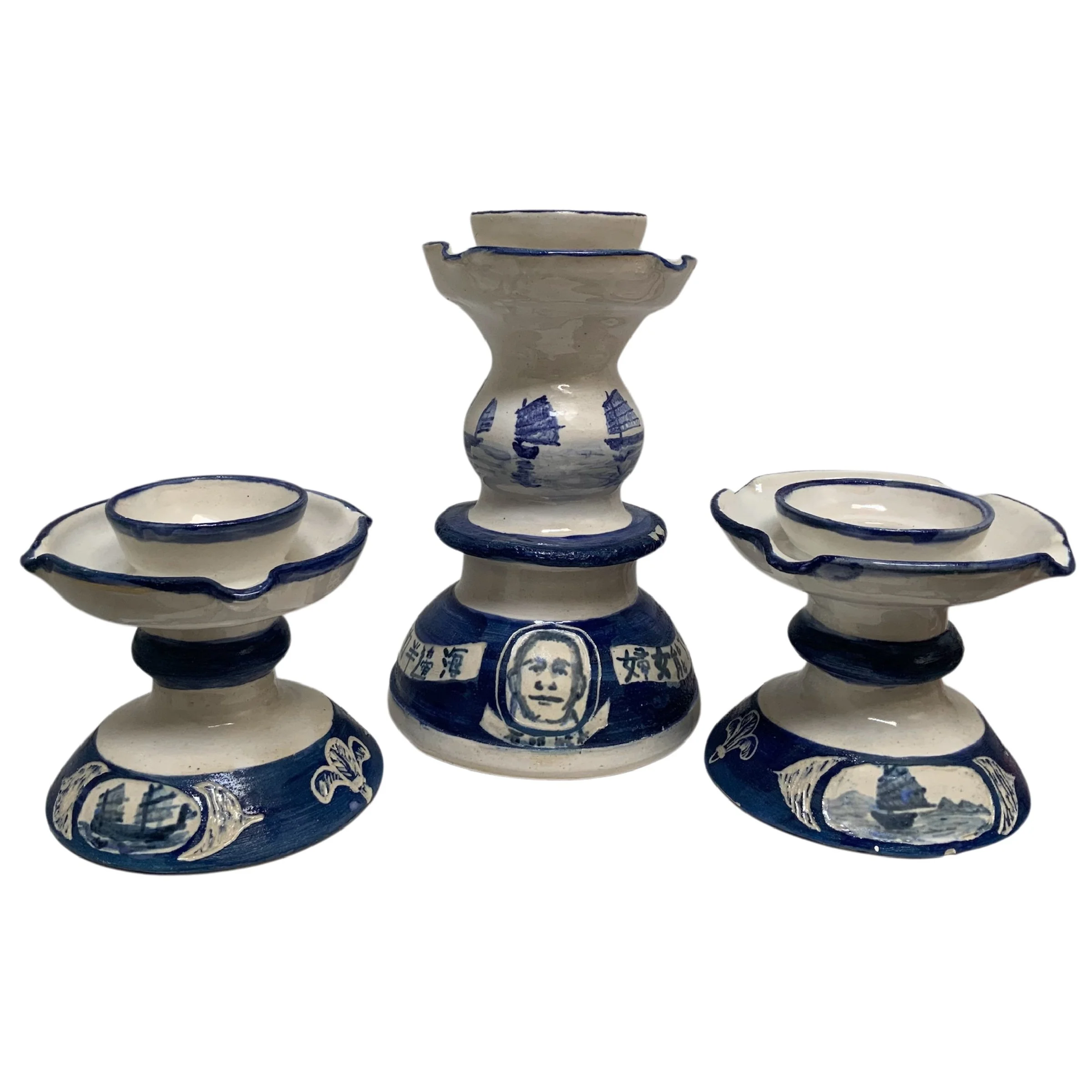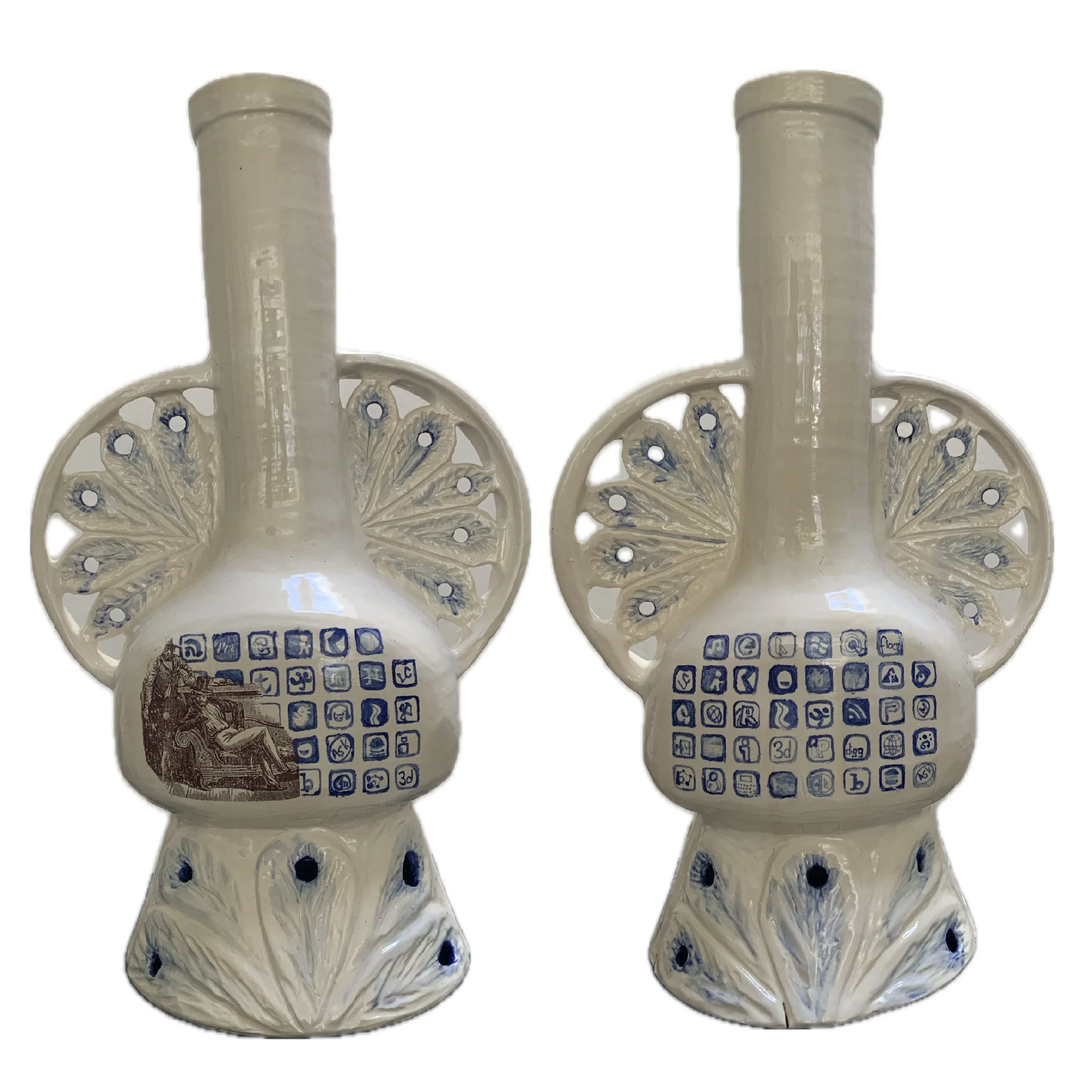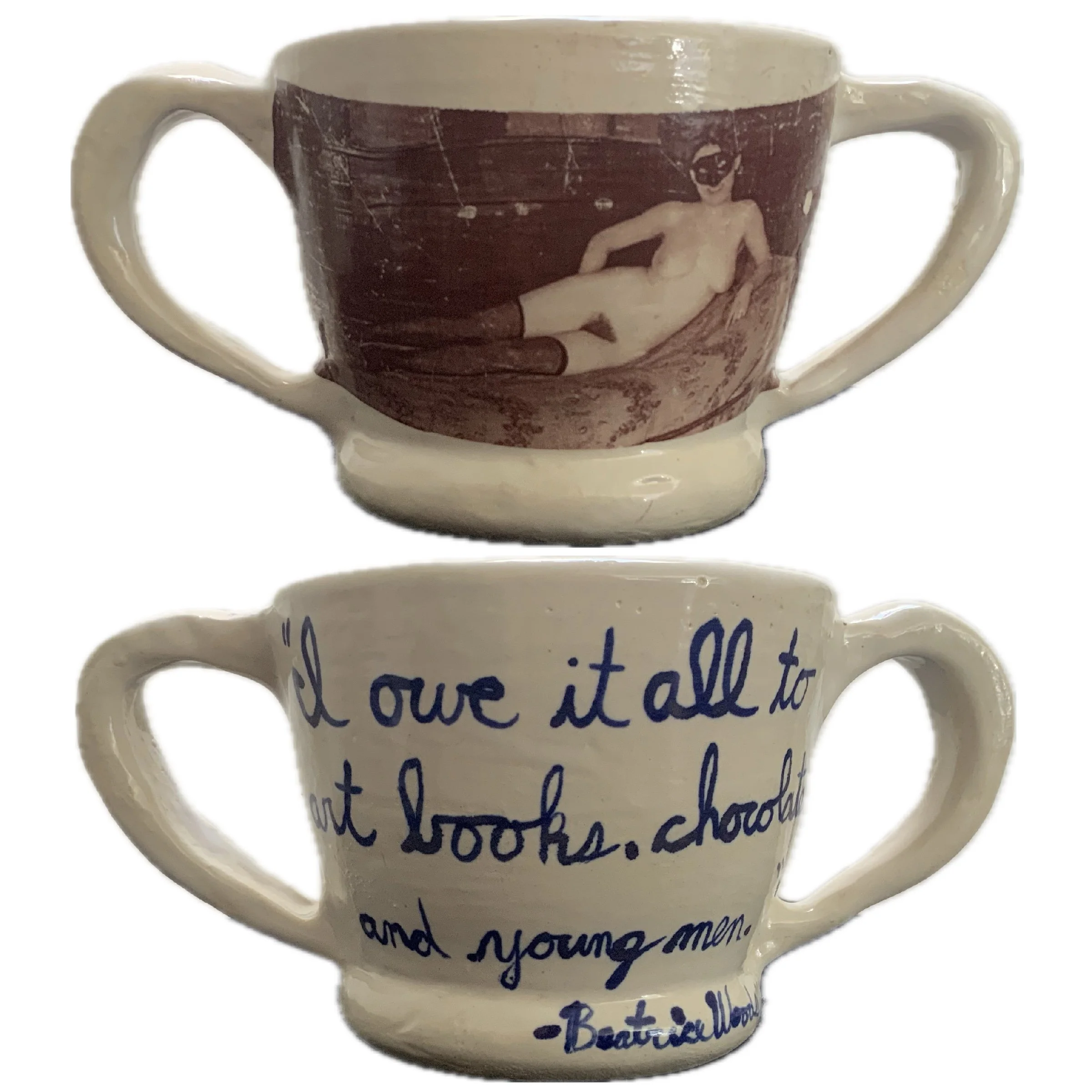Ano Domini
2022, 2025
Cobalt glazed ceramic
Artist Statement
Ano Domini translates from the Latin as “God’s Asshole” or the “Lord’s Anus;” add an “n” and you’d have Anno Domini (“Year of our Lord”). Like the concepts of Manifest Destiny and American Exceptionalism, the idea of historical time being sanctioned by a Christian, male god may seem like an artifact of the past, but all these ideas are still at the root of our racist, sexist, xenophobic American culture. Ano Domini takes these toxic ideas to their natural conclusion - centering the gaze on and celebrating the all-powerful Caucasian phallus - while celebrating the many “glorious achievements” of Western Capitalism.
The vessels are designed like men’s club Wunderkammer objects - one side to enjoy when hobnobbing with elite insiders, and the other side for when outsiders and women are around. Like many European-manufactured orientalist “curiosity” vases of the 18th and 19th century, the objects from 2022 feature a comely nude on one side, and decorative historical landscape or patterns on the other. The key difference here is that the images of comely nudes are are not imagined, exotified others (topless/nude culturally misappropriated women); they are actual men who consented to be photographed sexually at the peak of white American masculinity and power (source photos were taken in the 1970’s by Annie Sprinkle for gay pornography magazines.) The 2025 objects have slightly different goals than the 2022 objects; they aim to document this strange moment in time as his-tory unfolds. As a result, the idea of “pornography” is less literal, and instead focuses the gaze on titillation, and the other on the logical conclusion of the moment. The non-figurative imagery on these pieces commemorate moments of “great achievement” by Capitalism, Western Democracy, Technology, etc - events that have been a mixed bag at best for humanity as a whole - atomic weapons, the Gold Rush and western expansion, mechanical human flight, the Klansman-like (and much-contested) Washington Monument, DOGE cuts, neo American Fascism etc.
Blue and white ceramic wares with cobalt underglaze or stain on a white ceramic body was first utilized in Persia sometime around the 9th century. During the Yuan Dynasty (1271-1368 C.E.), the Chinese imported cobalt from Persia and utilized it in ceramics, but it wasn’t until the the Ming Dynasty (1368-1644 C. E.) that blue and white ware became internationally popular as “china”. In 1735, Swedish chemist George Brandt “discovered” cobalt; potteries throughout Europe soon were making Chinese style pottery, which in turn mimicked earlier Mughal and Persian designs. Later, cobalt deposits were found in the New World, and cobalt was used to decorate traditional American Salt pottery, as well as American and Canadian ceramics that copied earlier Delft pottery (which in turn copied the earlier Asian styles). All of this material history is a long winded way of saying that cobalt and white pottery has been highly developed and used to commemorate achievements of empires at their apex. As their powers wane, their highly derivative styles are mimicked by the newly ascendant empire.
